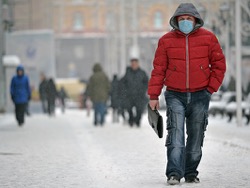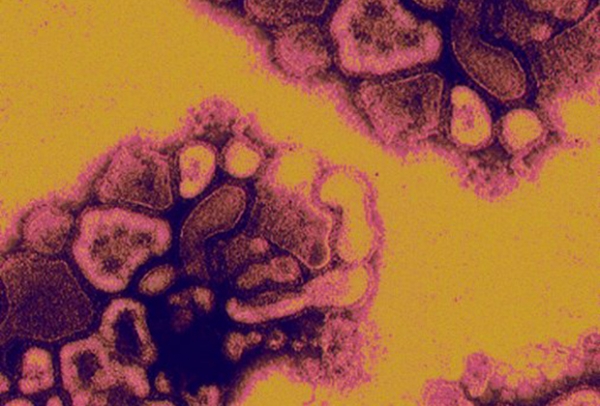
Why humanity is at risk to die from a new pandemic of avian virus
How dangerous for human avian and swine flu? Why epidemics occur and when they develop into pandemics? Whether to vaccinate and how safe they are? Is there any protection against a pandemic in humans? To these and other questions “of the Tape.ru” said Russian biologist Georgii Bazykin.
Simple rules
Infectious agent influenza is a virus. This immediately implies several conclusions. For example, antibiotics against influenza meaningless. With their help, humanity fights against bacteria. Flu and other viruses need specific antiviral drugs. To go to a clinic or pharmacy and ask for antibiotics if you have flu, it is meaningless. You need to understand that protection from the flu. Partial, incomplete, but there. This vaccination. Each year we are able to be vaccinated against influenza. Doctors strongly advise to do it. It is best in October and November.

Georgy Bazykin
Flu vaccines are quite effective. Not one hundred percent, that is, do not give a complete guaranteed protection from the flu, but are effective — from 50 to 70 percent. People cannot get the flu from the vaccine because it contains live strains of the flu (live virus particles). Viral vaccines are made different. Only destroyed some contain viruses, others only the surface proteins of viruses, that is actually the virus (its genetic material) is not there.
Every year the vaccine must be updated. This is because the flu virus mutates all the time, evolving, changing. And vaccination programs have to chase him and his changes. Every year, the vaccine needs to be put new strains.
Now
The flu, which is on the rise now is the pandemic strain of 2009 H1N1, known as swine flu. It was passed to humans from pigs. This is not a unique property — there were other influenza viruses, inherited the man is also from a pig. It is better to talk about the pandemic strain of 2009. Humanity first met him 7 years ago, and we already understand some of its properties.
We know that it is not as dangerous and not as deadly as initially thought. This is because at first mainly studied are the cases when they were killed. On average the mortality rate from this virus is the same as from the seasonal flu we are sick every year. In some sense we can say that the pandemic strain of 2009 has now become a common seasonal virus.

Photo: Alexey Maligawa / RIA Novosti
Maybe he will come in the following seasons. There’s nothing dangerous for most healthy people. Those who were vaccinated in 2009, in some degree protected from this virus, but even if the strain does not change, still better to be vaccinated every year anew. This year the vaccine was included a component that protects against the 2009 strain. The vaccine is quite effective: people, grafted in November, more protected than those who had not been vaccinated.
As there are new strains
The problem is that the virus changes all the time, evolves very quickly. In fact, any biological object evolves. In all living things there is genetic information. Humans — DNA, virus — RNA. When copying the genetic information is constantly undergoing mutation — it changes a little. And the text written in the genome, also changes a little. If you imagine the English version, it just would be replaced by one letter.
In humans these changes occur slowly, and the virus quickly. First, the virus genome RNA is recorded, and it is much less stable molecule than DNA (in particular, it is single-stranded and not double stranded like DNA). Secondly, the flu in some sense “wants” to change — it is acted upon by natural selection. Modified versions of flu that are different from last year’s, the immune system learns worse.
Therefore, these variants gain advantage. They are transmitted more effectively between people, more effectively infect us. Option, different from last year, the average turns out to be evolutionary successful. The influenza virus is designed so that it, say the evolutionists, is always a positive selection (Darwinian selection aimed to ensure that the virus is constantly changing). As a result, the influenza virus is one of the most rapidly evolving of all known biological objects. Every year, the flu accumulates a lot of mutations.

The H1N1 virus (swine flu)
Photo: Globallookpress.com
In General, people often think about evolution as about the deeds of days gone by, present only a theoretical interest. You need to understand that, according to rough estimates, about 30 percent of all deaths are somehow linked to the evolution of simple single-celled objects. For example, pathogens, including viruses, bacteria and fungi, as well as its own human cells, which are in some sense “crazy” and lead to the formation of malignant tumors.
Making the vaccine
She teaches the immune system on what to hunt. Shows her a fragment of what is dangerous and trains the immune system that remembers this image.
The viral particle is like a ball, from which protrude two to the outside surface of the protein. One is hemagglutinin, and the other is neuraminidase. This can be compared to a small planet covered in forests, and when we look sideways, we see mostly crown — surface proteins called epitopes. The trouble is that they the virus is very easy to change. It can easily make these crowns to others, and when our immune system looks at this planet, she wouldn’t recognize her. Therefore, we constantly need new vaccines.
We already well understand why these two proteins. One of them (hemagglutinin) — in order to join the host cell, the second (neuraminidase) — to return, when the viral particle buds from parent cell, to cut ties. The most famous cure for the flu, which is now on everyone’s lips, with the active substance oseltamivir, seeks to block the neuraminidase, the new viruses could not be separated from the cells. Unfortunately, some viruses acquire resistance to this enzyme and cease to react to it.
While swine flu is sensitive to oseltamivir. Is a prescription drug, it has a large list of potential side effects, and it is effective only in the early stages of the disease. He is useless against the common cold because, unlike flu, the common cold is caused by a wide spectrum of different viruses and therefore, it is harder to fight (there are more possible agents).

Photo: Oleksandr Kondratyuk / RIA Novosti
Attempts to make a universal vaccine continues. Now there are several candidates that are currently in clinical trials. People are trying to come up with something that would train the immune system and that virus can’t be changed painlessly. There are different approaches. Some vaccines are designed to “see” not the crown and trunks of these trees — part of proteins, sitting closer to the viral particle. Some try to show any other proteins inside the virus, your immune system to recognize foreign elements.
How are pandemic
The viral genome is encoded to 11 separate segments. They look like little human chromosomes and can be mixed. We have one half of the chromosomes came from mom, other from dad. Similarly, if one cell gets infected with two viral particles with different sets of segments, the segments are reshuffled, and as a result can form a new viral particle with new properties.
New properties for the virus is good, but for us is bad. In XX and XXI centuries there were several major pandemics. Five to six approximately. Almost all of them were called such reassortant strains, have occurred due to the fact that the segments of the virus were peretasoval. This was the Hong Kong flu of the mid-twentieth century, such, apparently, was the most famous epidemic — the Spanish flu of 1918, one of the deadliest pandemics in human history (it took a few percent of the world population). So was the swine flu of 2009.
Today we understand quite well what happened with influenza in 2009. Traces the history of each segment before they merged and given a new pandemic strain. I don’t know the works, which would have shown that the swine strain infects birds. Apparently, this reassortant long lived in pigs. All of the major pandemics were caused by reassortant strains. We are interested in this issue, and we have established this.
Look at the reassortment from the point of view of the virus. Each gene into a new genetic background. If you imagine the gene as a phrase (in any language), he appears in a new context. Not necessarily that in these conditions he will work in an optimal way. Perhaps some letters or words need to change. together these genes produced more meaningful text.

Photo: Dmitry Korotaev / Kommersant
We assumed that after reasontly rapid accumulation of point changes. To test this hypothesis, and found that it is. Why is it important? First, this is an interesting theoretical result. In the applied aspect, this is important because we can try to predict future growth re-assortment. In General, the prediction of evolution is that we know how to do very poorly. But this is what we have to do every year — we need to start planning a vaccine for six months before it is used. This is something that we, apparently, do not optimal. Now people are guided by heuristics that approximate these considerations, trying out those strains that are included in March, to choose those that will give the epidemic the following November.
Small point and evolution of the virus we predict badly, and the projected reasontly really bad. We can’t even predict how a particular combination of genes with certain properties will behave in man or in animals. This can be verified experimentally, but it is impossible to try all possible combinations in the experiment, for example, for ferrets. But in the case of avian influenza we are able to understand how what combination of genes will behave in man or mammals.
Bird flu
In this case, the source of possible pandemic strains are not pigs, and poultry. And birds, first of all, very much, even Pets, and more importantly, the flu can transmit not only domestic, but also wild birds. The bird flu virus known as the H5N1 strain and a few years ago was popular in the news. This virus is transmitted from birds to humans and is almost never transmitted from person to person. Which is good, because the mortality of this flu at the infection from birds is very high.
Bird flu everyone is afraid and worried, not will it have any mutations that will give him the opportunity to be transferable between mammals. Such mutations are possible. It was found during experimentation with animals. Scientists have a strain of the bird flu virus that could be transmitted between ferrets, sequenced (reads) genome and saw that from the usual avian influenza it differs about five mutations. Some of these have mutations in natural populations. Then you can worry about how quickly will the remaining mutations and the virus potentially will acquire the ability to transmit between mammals.
Accurate estimates we have, but our work shows that this can happen faster than we expect, because reasontly point substitutions happen quickly. Universal guaranteed protection against pandemic mankind has no. It seems to me that humanity is not especially prepared for the fact that suddenly a new strain of something that will be very effective in spreading and very deadly.
Such situations have in recent memory. For example, SARS. It was a virus that is very effective to infect humans and was very deadly. The rapid development of the epidemic was avoided thanks to the heroic measures of the health systems of China (and, in particular, Hong Kong). Virus retained at the expense of the quarantine and the cancellation of the international flights. How it succeeds in some other part of the world, we don’t know.








